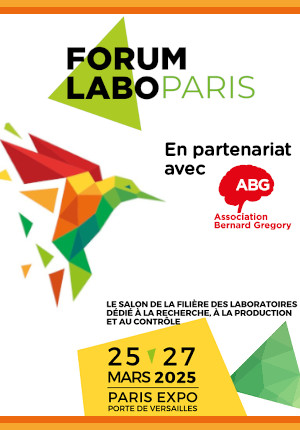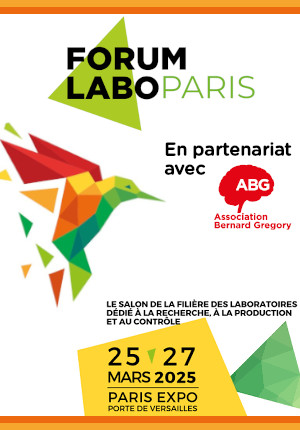Effets d'étirements sur le déclenchement de cellules Purkinje // Stretch Effects on Ectopic Purkinje Firing
|
ABG-128627
ADUM-61315 |
Thesis topic | |
| 2025-02-14 |
Université de Bordeaux
Talence cedex - France
Effets d'étirements sur le déclenchement de cellules Purkinje // Stretch Effects on Ectopic Purkinje Firing
- Mathematics
réseau de Purkinje, modélisation cardiaque, calcul de haute performance, arythmies, électromécaniques
Purkinje System, cardiac modelling, high performance computing, cardiac arrhythmia, electromechanics
Purkinje System, cardiac modelling, high performance computing, cardiac arrhythmia, electromechanics
Topic description
Les maladies cardiaques sont la principale cause de décès dans les pays industrialisés. La moitié de ces décès sont dus à des arythmies, c'est-à-dire à des perturbations de l'activation électrique ordonnée des tissus. Le système de Purkinje (SP) est le système de conduction rapide du cœur, chargé de distribuer le signal électrique pour assurer une activation presque synchrone. Cependant, les fibres du système de Purkinje peuvent être soumises à un étirement anormal qui peut induire une mise à feu et déclencher une arythmie. Cette thèse développera le modèle électromécanique le plus détaillé de l'activation du ventricule basé sur l'IRM/CT à haute résolution qui permet de segmenter les trabécules, les brins musculaires épais sur la surface endocardique à travers lesquels les fibres du PS sont connues pour courir. Des simulations informatiques électromécaniques seront réalisées pour étudier le fonctionnement du cœur entier en calculant les biomarqueurs cliniques (pression, ECG, fraction d'éjection). Des pathologies telles que des cicatrices et/ou des perturbations électriques, le bloc de branche par exemple, seront mises en œuvre pour modifier le développement de la déformation dans le cœur battant, conduisant à des augmentations locales de l'étirement qui ouvrent des canaux activés par l'étirement pour provoquer des tirs ectopiques dans les cellules de la PS. Le rôle des régions adjacentes qui ont été étirées, mais pas suffisamment pour induire des tirs, sera exploré car elles peuvent fournir un bloc de conduction important pour que les réentrées se développent. Les conditions dans lesquelles ces tirs conduisent à une arythmie mortelle seront élucidées.
------------------------------------------------------------------------------------------------------------------------------------------------------------------------
------------------------------------------------------------------------------------------------------------------------------------------------------------------------
Heart disease is the leading cause of death in the industrialized world. Half of these deaths are caused by arrhythmias, disturbances to the orderly electrical activation of the tissue. The Purkinje System (PS) is the fast conduction system of the heart, responsible for distributing the electrical signal to ensure a nearly synchronous activation. However, the fibres of the PS may be subject to abnormal stretch which can induce firing to start an arrhythmia. This thesis will develop the most detailed electromechanical model of ventricle activation based on high resolution MRI/CT which allows segmenting trabecula, the thick muscle strands on the endocardial surface through which PS fibres are known to run. Electromechanical computer simulations will be performed which will investigate whole heart functioning by calculating clinical biomarkers (pressure, ECG, ejection fraction). Pathologies like scars and/or electrical disturbances, bundle branch block for example, will be implemented to alter the development of strain within the beating heart, leading to local stretch increases which open stretch-activated channels to provoke ectopic firing in the cells of the PS. The role of adjacent regions which were stretched, but not enough to induce firing, will be explored as they may provide important conduction block for reentries to develop. The conditions under which these firings lead to lethal arrhythmia will be elucidated.
------------------------------------------------------------------------------------------------------------------------------------------------------------------------
------------------------------------------------------------------------------------------------------------------------------------------------------------------------
Début de la thèse : 01/09/2025
------------------------------------------------------------------------------------------------------------------------------------------------------------------------
------------------------------------------------------------------------------------------------------------------------------------------------------------------------
Heart disease is the leading cause of death in the industrialized world. Half of these deaths are caused by arrhythmias, disturbances to the orderly electrical activation of the tissue. The Purkinje System (PS) is the fast conduction system of the heart, responsible for distributing the electrical signal to ensure a nearly synchronous activation. However, the fibres of the PS may be subject to abnormal stretch which can induce firing to start an arrhythmia. This thesis will develop the most detailed electromechanical model of ventricle activation based on high resolution MRI/CT which allows segmenting trabecula, the thick muscle strands on the endocardial surface through which PS fibres are known to run. Electromechanical computer simulations will be performed which will investigate whole heart functioning by calculating clinical biomarkers (pressure, ECG, ejection fraction). Pathologies like scars and/or electrical disturbances, bundle branch block for example, will be implemented to alter the development of strain within the beating heart, leading to local stretch increases which open stretch-activated channels to provoke ectopic firing in the cells of the PS. The role of adjacent regions which were stretched, but not enough to induce firing, will be explored as they may provide important conduction block for reentries to develop. The conditions under which these firings lead to lethal arrhythmia will be elucidated.
------------------------------------------------------------------------------------------------------------------------------------------------------------------------
------------------------------------------------------------------------------------------------------------------------------------------------------------------------
Début de la thèse : 01/09/2025
Funding category
Funding further details
Appel à projets - UB PhD Scholarships
Presentation of host institution and host laboratory
Université de Bordeaux
Institution awarding doctoral degree
Université de Bordeaux
Graduate school
39 Mathématiques et Informatique
Candidate's profile
L'étudiant(e) responsable de ce projet devrait idéalement être un étudiant en ingénierie avec une spécialisation en génie biomédical ou, au minimum, en génie mécanique. L'étudiant(e) doit être compétent dans le développement de modèles informatiques et l'analyse des résultats.
À ce titre, le candidat(e) doit posséder de solides compétences informatiques pour analyser des données spatio-temporelles complexes et présenter les résultats de manière originale. La connaissance de Python ou de MatLab est essentielle.
L'élaboration de modèles, la connaissance des méthodes numériques et la capacité à exécuter des simulations sur de grandes installations informatiques à haute performance sont des compétences à développer, mais il n'est pas nécessaire de coder des logiciels de simulation.
Des connaissances en biologie sont hautement souhaitables, mais elles peuvent être acquises par le biais de cours et de la littérature, ainsi que par l'application pratique.
Le candidat(e) devra rédiger au moins un article scientifique en anglais pour des revues internationales.
Sont éligibles uniquement des candidatures internationales, à savoir :
- des candidates ou candidats ayant obtenu (ou en cours d'obtention de) leur diplôme d'accès au doctorat (Master ou équivalent) dans un établissement à l'étranger
- des candidates ou candidats actuellement dans un Graduate Program de l'université de Bordeaux, inscrits en deuxième année de Master et ayant obtenu leur diplôme d'accès au Master dans un établissement à l'étranger
Seront prises en compte uniquement les candidatures soumises sur la plateforme suivante : https://aap.u-bordeaux.fr/ et avant le 17 mars à 23h59 (GMT Paris).
Un guide de candidature ainsi que la liste des documents à soumettre sont disponibles sur la plateforme.
Pour toute question, veuillez contacter : internationalisation.doctorat@u-bordeaux.fr
The student responsible for this project should ideally be an engineering student with specialization in biomedical, or at a minimum, mechanical engineering. The student should be competent in developing computer models and analyzing results. As such, the candidate needs strong computer skills, for analyzing complex spatiotemporal data, and presenting results in original ways. Knowledge of Python or MatLab is essential. Developing models, a knowledge of numerical methods, and being able to run simulations on large high performance computing facilities are skills to be further developed, but coding simulation software is not necessary. Biological knowledge is highly desirable, but can be obtained though courses and literature, as well as practical application. The applicant will be expected to write at least one scientific article which will need to be in English for international journals. The UB PhD scholarship program is open to international candidates only, which means: - candidates holding (or currently enrolled in) a national level master's degree or another degree conferring master's status from a foreign institution - candidates currently in a Graduate Program, enrolled in second year of Master at the University of Bordeaux, and holding a degree from a foreign institution We will only consider applications submitted on the following platform: https://aap.u-bordeaux.fr/ and prior March 17, at 11:59pm (GMT Paris). A guide on how to apply as well as the list of documents to submit are available on the platform. For any question, please contact: internationalisation.doctorat@u-bordeaux.fr
The student responsible for this project should ideally be an engineering student with specialization in biomedical, or at a minimum, mechanical engineering. The student should be competent in developing computer models and analyzing results. As such, the candidate needs strong computer skills, for analyzing complex spatiotemporal data, and presenting results in original ways. Knowledge of Python or MatLab is essential. Developing models, a knowledge of numerical methods, and being able to run simulations on large high performance computing facilities are skills to be further developed, but coding simulation software is not necessary. Biological knowledge is highly desirable, but can be obtained though courses and literature, as well as practical application. The applicant will be expected to write at least one scientific article which will need to be in English for international journals. The UB PhD scholarship program is open to international candidates only, which means: - candidates holding (or currently enrolled in) a national level master's degree or another degree conferring master's status from a foreign institution - candidates currently in a Graduate Program, enrolled in second year of Master at the University of Bordeaux, and holding a degree from a foreign institution We will only consider applications submitted on the following platform: https://aap.u-bordeaux.fr/ and prior March 17, at 11:59pm (GMT Paris). A guide on how to apply as well as the list of documents to submit are available on the platform. For any question, please contact: internationalisation.doctorat@u-bordeaux.fr
2025-03-17
Apply
Close
Vous avez déjà un compte ?
Nouvel utilisateur ?
More information about ABG?
Get ABG’s monthly newsletters including news, job offers, grants & fellowships and a selection of relevant events…
Discover our members
 Nokia Bell Labs France
Nokia Bell Labs France  ANRT
ANRT  Laboratoire National de Métrologie et d'Essais - LNE
Laboratoire National de Métrologie et d'Essais - LNE  ONERA - The French Aerospace Lab
ONERA - The French Aerospace Lab  ADEME
ADEME  CESI
CESI  PhDOOC
PhDOOC  Généthon
Généthon  CASDEN
CASDEN  MabDesign
MabDesign  Aérocentre, Pôle d'excellence régional
Aérocentre, Pôle d'excellence régional  MabDesign
MabDesign  Institut Sup'biotech de Paris
Institut Sup'biotech de Paris  Ifremer
Ifremer  Institut de Radioprotection et de Sureté Nucléaire - IRSN - Siège
Institut de Radioprotection et de Sureté Nucléaire - IRSN - Siège  SUEZ
SUEZ  Tecknowmetrix
Tecknowmetrix  Groupe AFNOR - Association française de normalisation
Groupe AFNOR - Association française de normalisation  TotalEnergies
TotalEnergies










